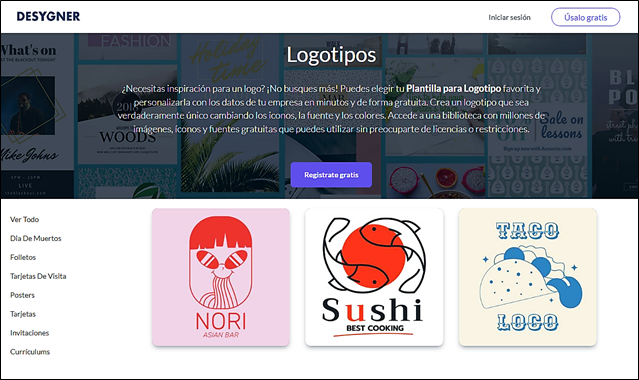Marketing tactics are small steps or specific activities that will be carried out to implement the general marketing strategy and achieve the strategic objectives of the business, improving the value proposition to customers. customers.
In this article you will find:
4 Types of Marketing Tactics
The key to effective marketing is to select and combine marketing tactics that are aligned with the overall strategy, the target audience and the specific objectives of the business.
Well, strategies alone do not generate results if actions or tactics are not executed to support them, hence marketing tactics depend on the marketing strategy to achieve the desired objectives.
Advertisements

Therefore, we can say that tactics are small steps that must be carried out to achieve the objective pursued by the strategy.
Advertisements
Let's see what the 4 most common types of marketing tactics are all about.
What are marketing tactics?
The marketing tactics or marketing tactics are specific actions, planned and coordinated that must be executed to achieve a short-term goal or objective as part of a global strategy.
Advertisements
It is important to take into account that while the marketing strategy defines the general direction and approach based on an analysis and study of the market, competition and target audience, tactics are the specific steps or activities that will be carried out to implement that strategy.
4 Types of marketing tactics
There are multiple tactics, and your choice will depend on your overall marketing strategy, as well as the type of business, target market, available resources, and purpose.
Advertisements
Some types of marketing tactics that organizations often use:
Marketing tactics for strategy positioning market
He market positioning allows you to establish How the company wants consumers to perceive its product or service in relation to the competition; It is essential to create a unique image or identity in the minds of consumers about the brand, product or service.
Advertisements
To implement this strategy there are several tacticalmarketing strategies that can be implemented such as:
- Consistent Advertising: Advertising should reflect the desired positioning through messages, images and tone that are consistent with the positioning statement.
- Product Quality and Design: Ensure product design and quality supports positioning.
- Pricing Tactics: Price can be a strong positioning indicator, for example, higher prices may indicate quality or exclusivity, while lower prices may indicate accessibility or value.
- Brand Ambassadors: Selecting celebrities or influencers that reflect and strengthen the desired positioning can be a very effective tactic.
- Customer experience: Everything, from the customer service right down to the purchasing process and packaging, it must align with the expected positioning.
Marketing tactics for strategy segmentation market
The strategy of market segmentation is based dividing the total market into smaller and more homogeneous groups based on specific characteristics, such as demographics, purchasing behavior or geolocation.
Once these segments have been identified, companies can design specific tactics to target each of them effectively, such as:
- Personalized Advertising: Create ads that reflect the specific characteristics and needs of the target segment. For example, if a segment is primarily made up of young people, advertising can include music, language and visuals that appeal to that demographic.
- Specific Offers and Promotions: Design offers that align with the preferences and purchasing behaviors of a particular segment.
- Events and Personalized Experiences: Organize events or experiences that appeal to specific segments, such as workshops, seminars or product launches.
- Sales Channel Optimization: Use distribution channels that are preferred or frequented by the target segment. For example, if a segment buys primarily online, prioritize e-commerce.
- Publications and Valuable Content: Create blogs, videos, infographics and other types of content that address topics of specific interest to each segment.
Marketing tactics for strategy diversification
The diversification strategy it implies enter new markets with new products, moving away from what the company has traditionally been doing.
The tactics to implement a diversification strategy include:
- Market research: Before diversifying, it is essential to research and understand the new market, this includes identifying customer segments, analyzing competitors and understanding market trends.
- Product development: Create products that meet the specific needs of the new market or segment, this may include adapting existing products or developing new products from scratch.
- Market Tests: Launch the product in a limited geographic area or to a specific segment to gather feedback and make adjustments before a full launch.
- Promotional Campaigns: Implement special promotions to raise awareness and encourage testing of the new product.
- Active Listening and Feedback: Since you are entering uncharted territory, it is crucial to actively listen to customers and be willing to make adjustments based on their feedback.
Marketing tactics for strategy loyalty
The loyalty strategy aims to Maintain current customers, increase brand loyalty and encourage them to make more purchases or use a service more often.
Some tactics Marketing strategies that can be used to implement a loyalty strategy are:
- Loyalty Programs: These programs offer rewards, discounts or exclusive benefits to customers for their repeat purchases or brand loyalty.
- Personalized Communication: Use customer information to send personalized messages, targeted offers and recommendations based on your preferences and past behavior.
- Surveys and Feedback: Regularly solicit feedback from your clients and demonstrate that you value and act on their recommendations.
- Mobile apps: Develop applications that offer exclusive functions, with purchase facilities or rewards for users.
- Updates and Improvements: For existing products or services, offer regular improvements and updates that add value.
Conclusion:
As we mentioned before, marketing tactics are actions that make up marketing strategies, therefore, they cannot be exist without the other, therefore, these are essential to achieve the strategic objectives of the business, improving the value proposition to the customers. customers.


